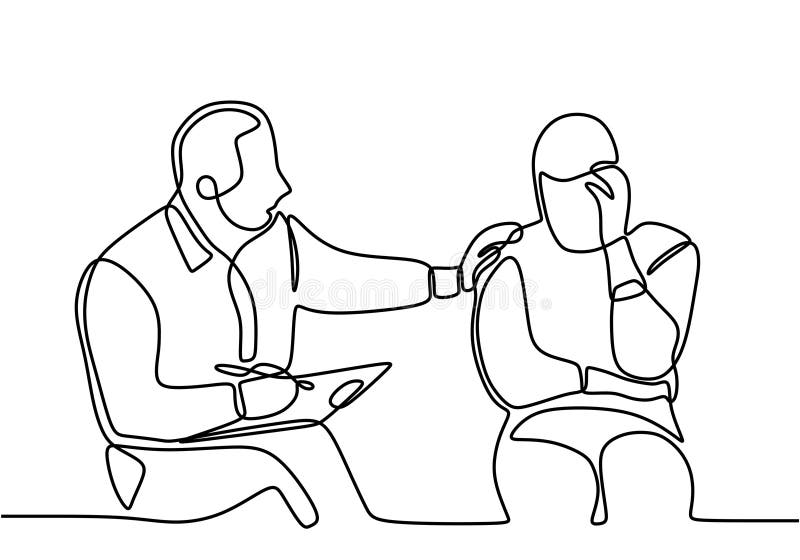The Significance of Looking For Aid from the Best Psychologist in Delhi for Stress Administration
The Significance of Looking For Aid from the Best Psychologist in Delhi for Stress Administration
Blog Article
Psych Therapy: A Comprehensive Overview to Results and methods

Cognitive-Behavioral Treatment
Cognitive-Behavioral Therapy (CBT) is a widely made use of psychotherapeutic approach that concentrates on determining and customizing inefficient reasoning and behavior patterns. Developed in the 1960s by Aaron T. Beck, CBT incorporates behavior and cognitive concepts to attend to different psychological health problems, consisting of anxiety, anxiousness, and stress-related conditions. The premise of CBT is that maladaptive thoughts contribute to emotional distress and maladaptive habits. By restructuring these thoughts, individuals can attain considerable renovations in their psychological well-being and everyday performance.
Methods such as cognitive restructuring, exposure treatment, and skill-building workouts are generally utilized. Cognitive restructuring entails challenging and altering unfavorable idea patterns, while direct exposure treatment aims to lower worry and anxiety with steady exposure to feared items or situations.
Evidence-based research study sustains the efficiency of CBT for a large range of mental disorders - Best Psychologist in Delhi. Its focus on skill acquisition and self-help methods empowers customers to continue development independently after therapy ends. The versatility and effectiveness of CBT have actually made it a cornerstone in modern psychotherapeutic practice
Psychodynamic Methods
Rooted in the very early concepts of Sigmund Freud, psychodynamic approaches concentrate on exploring the subconscious mind and its influence on actions and emotions. These techniques intend to discover concealed thoughts and sensations that may be driving maladaptive habits and mental distress. Central to this technique is the principle of inner conflict, commonly originating from unresolved previous experiences, specifically those from childhood years.
Therapists utilizing psychodynamic methods utilize a number of crucial approaches, consisting of cost-free association, where people are urged to talk freely to reveal subconscious product, and desire evaluation, which analyzes the latent content of dreams. In addition, the expedition of transference and countertransference characteristics within the restorative relationship is essential. These interactions can supply insights into the client's internal globe and relational patterns.
Psychodynamic therapy is generally longer-term contrasted to other modalities, supplying a thorough and deep understanding of the person's psyche. Study shows that it can be particularly effective for complicated psychological health and wellness problems, such as personality problems and chronic anxiety. By fostering self-awareness and psychological insight, psychodynamic therapy looks for to bring subconscious material to consciousness, enabling individuals to attain enduring and meaningful change in their lives.
Humanistic Strategies
Structure on the structures laid by psychodynamic strategies, humanistic methods supply an unique perspective concentrated on individual potential and self-actualization. Coming from in the mid-20th century, these techniques prioritize the inherent goodness and development potential of individuals, emphasizing an all natural view of human experience. Trick figures such as Carl Rogers and Abraham Maslow have actually significantly influenced this healing method, which incorporates methods like client-centered treatment and Gestalt therapy.
Client-centered therapy, established by Rogers, plays an essential role in humanistic strategies. The therapist's role is even more of a facilitator than an authority, urging customers to harness their inner resources for healing.
Gestalt therapy, one more vital humanistic technique, emphasizes present moment awareness and the combination of body and mind. By concentrating on the "present moment," customers obtain better understanding right into their existing feelings and behaviors. Methods such as role-playing and assisted visualization are often used to help clients obtain a much deeper understanding of themselves, ultimately bring about enhanced self-awareness and satisfaction.
Integrative Treatments
Integrative treatments stand for a synthesis of numerous restorative methods tailored to fulfill the special needs of each client. This method recognizes the intricacy of human psychology and the diverse nature of mental health and wellness issues. By integrating aspects from different colleges of psychotherapy-- such as cognitive-behavioral treatment (CBT), psychodynamic treatment, and humanistic strategies-- integrative therapies offer a more adaptable and alternative treatment paradigm.
Professionals of integrative therapy examine Visit This Link each customer's particular demands, symptoms, and individual history to devise a customized therapy strategy. This personalized approach boosts the potential for restorative success by dealing with the source of mental distress and promoting overall health. Methods might include mindfulness exercises, cognitive restructuring, and psychological processing, each chosen to target various elements of the customer's concerns.
Moreover, integrative therapies emphasize the healing relationship, seeing the client-therapist bond as a critical part of efficient therapy. This relationship promotes a helpful setting where customers feel risk-free to check out and address their problems. The versatility of integrative treatments makes them appropriate for a broad series of conditions, including anxiety, depression, trauma, and social problems, go consequently boosting their applicability and efficiency in diverse medical settings.

Gauging Therapy End Results
Reviewing the efficiency of psychiatric therapy is vital for both clients and medical professionals to guarantee that the therapy is generating the preferred end results. To accomplish this, various methods and tools are employed to gauge therapy end results methodically. Standardized evaluation instruments, such as the Beck Depression Inventory (BDI) and the Generalized Stress And Anxiety Problem 7 (GAD-7), provide measurable information on symptom extent and modifications with time.
In addition to standard tools, qualitative methods like client self-reports and scientific meetings supply valuable insights into the individual experiences and regarded progression of clients. Frequently arranged analyses, generally at the start, omphalos, and end of therapy, help in tracking the trajectory of renovation or identifying areas needing adjustment.
End result dimension is not restricted to sign reduction; it also encompasses functional enhancements in every day life, such as better interpersonal relationships, enhanced work productivity, and improved overall well-being. Modern developments in electronic health and wellness have actually introduced mobile applications and online platforms that help with real-time tracking and comments, further refining the analysis procedure.
Ultimately, a comprehensive method to measuring treatment results makes certain that healing treatments are effective, efficient, and tailored to fulfill the private demands of customers, consequently optimizing the total healing experience.
Final Thought
Humanistic techniques focus on individual development and self-actualization, while integrative treatments incorporate several methods for customized treatment strategies. Evaluating therapy end results via qualitative techniques and standard evaluations guarantees a comprehensive understanding of efficiency, eventually directing customers toward withstanding mental wellness renovations.
From the structured method of Cognitive-Behavioral Therapy (CBT) to the deep expedition of the unconscious in psychodynamic therapy, each technique brings special advantages. Its emphasis on ability purchase and self-help strategies empowers customers to proceed development separately after treatment wraps up (Best Psychologist in Delhi). Key numbers such as Carl Rogers and Abraham Maslow have considerably influenced this helpful site healing approach, which encompasses approaches like client-centered treatment and Gestalt therapy

Report this page